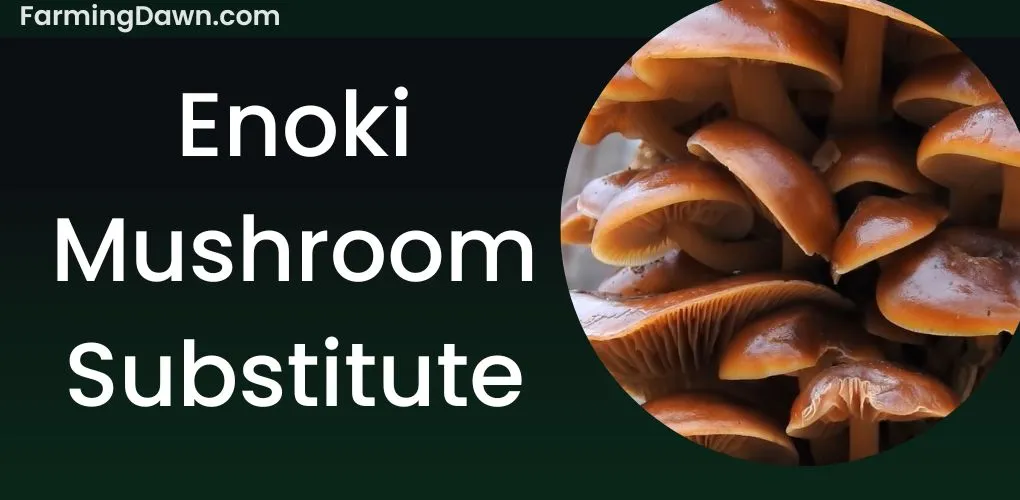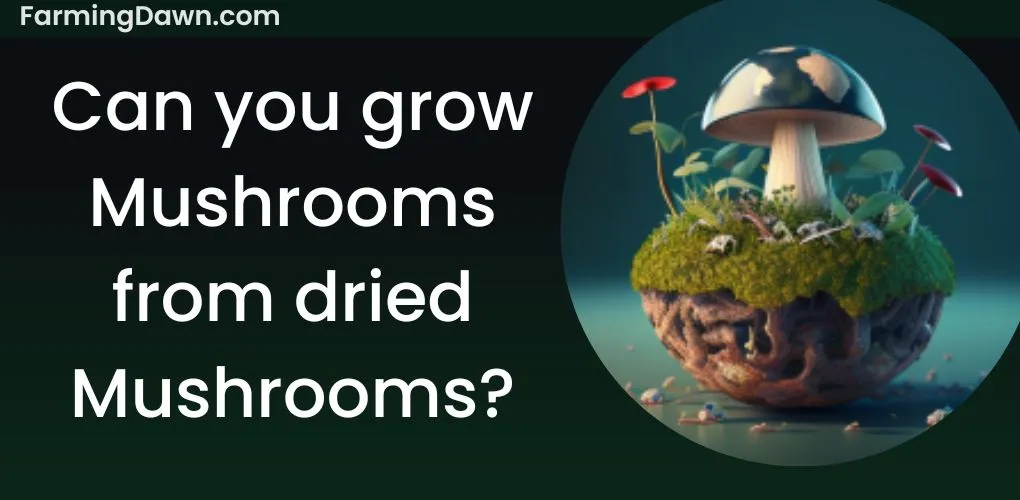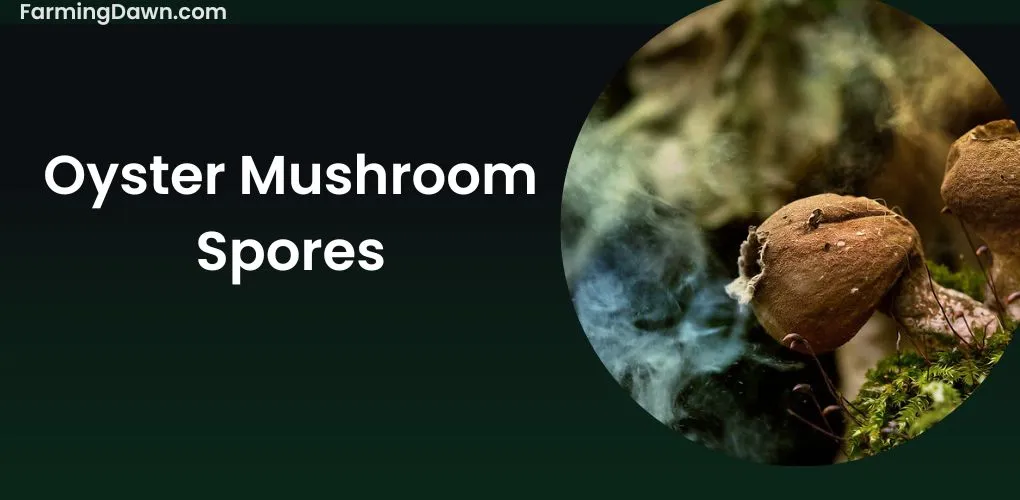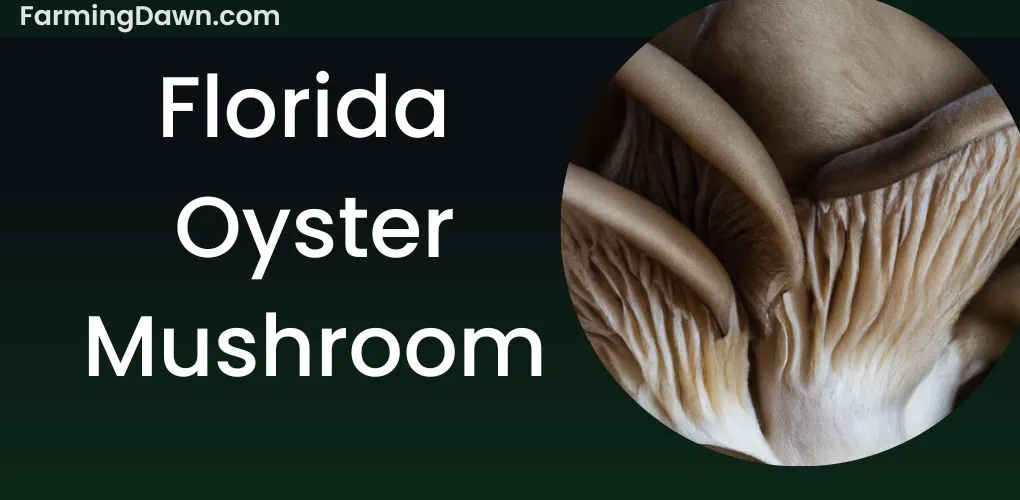Enoki mushrooms, golden needle mushrooms or Flammulina velutipes are a favorite addition in many dishes due to their delicate flavor and crunchy texture. However, there are various reasons why one might need a substitute for enoki mushrooms. Finding an enoki mushroom substitute might be difficult, whether because they are difficult to obtain, pricey, or you have a dietary sensitivity or allergy.
But don’t worry, because today I will share the best Enoki mushroom substitute for your garden or kitchen.
Criteria for Choosing Suitable Enoki mushroom substitute
It would be good if you retained some key factors in mind before making your selection. Finding a replacement that can replicate the delicate texture, mild flavor, and nutritional advantages of Enoki mushrooms is essential. Here is the criteria for selecting suitable enoki mushroom substitute:
- Texture Comparison
The texture of the replacement is one thing to take into account. Slim and delicate enoki mushrooms have a faint crunch that gives many dishes a distinctive texture. Choose a substitute that has a similar texture, such as oyster mushrooms, which similarly have a delicate, somewhat chewy texture.
- Flavor comparison
The flavor of the alternative should also be taken into account. The mild flavor of enoki mushrooms pairs well with various seasonings and foods. Enoki mushrooms can often be replaced with shiitake mushrooms in recipes because of their earthy, meaty flavor.
- Nutritional value
Another crucial factor is nutritional value. Enoki mushrooms include vitamins and minerals like potassium, copper, and selenium, as well as a large amount of fiber and a few calories. A suitable replacement should provide similar nutrition. Use maitake mushrooms, which are abundant in fiber and nutrients and low in calories.
- Accessibility and cost
Last but not least, accessibility and cost should also be considered. It’s crucial to have a suitable alternative on hand because enoki mushrooms might only sometimes be in season or available everywhere. To reduce costs, look for locally grown and seasonally appropriate substitutes.
10 Best Enoki Mushroom Substitute
The top 10 best substitutes for enoki mushrooms are as follows:
- Shiitake mushrooms
- Oyster mushrooms
- Beech mushrooms
- Button mushrooms
- Portobello mushrooms
- Shimeji mushrooms
- Maitake mushrooms
- Cremini mushrooms
- Chanterelle mushrooms
- Morel mushrooms
Lets discuss these substitutes one by one:
Shiitake mushrooms as enoki mushroom substitute
Shiitake mushrooms have a meaty texture and a potent, earthy flavor, unlike enoki mushrooms, which have a delicate, slightly sweet taste with a long, thin, and fragile stem. Nonetheless, shiitake mushrooms can be thinly sliced to imitate enoki mushrooms in soups, stews, and salads.
The same methods are used to grow shiitake and enoki mushrooms, and both prefer a warm, humid climate. Enoki mushrooms can grow on several substrates, including sawdust and rice straw. In contrast, shiitake mushrooms are commonly produced on logs or wood chips.
Shiitake mushrooms are flexible in the kitchen and may be incorporated into various soups, pasta recipes, and marinades. They can be boiled, grilled, or sautéed. Enoki mushrooms are frequently used in Asian salads and soups; they are best consumed raw or minimally cooked.
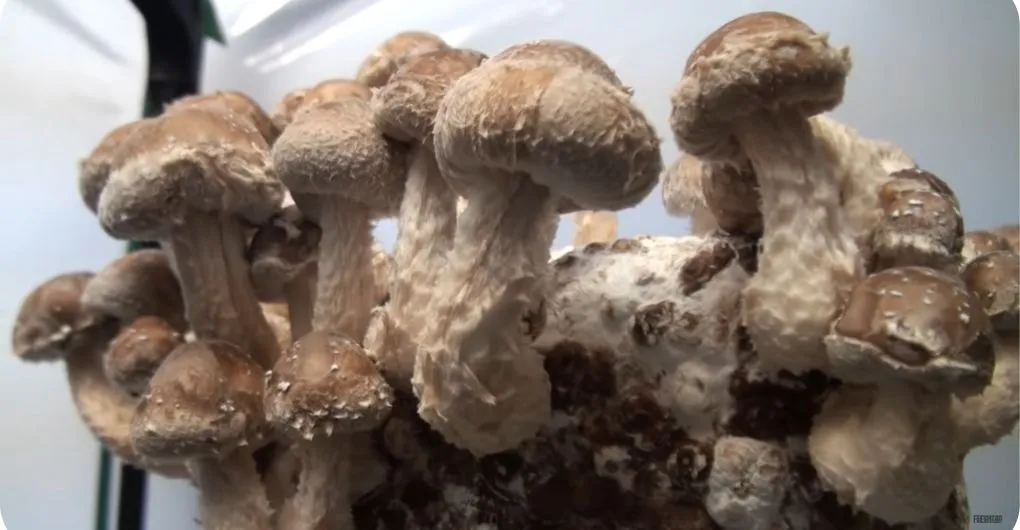
Oyster mushrooms as Enoki mushroom substitute
Oyster mushrooms can be an excellent substitute for enoki mushrooms. Although these two types look different, they have a lot in common. For instance, both have mild flavors, making them adaptable elements in a variety of cuisines. Moreover, oyster mushrooms are a fantastic choice for backyard gardeners because of how rapidly and readily they grow.
Oyster mushrooms can be used the same as enoki mushrooms in cooking. They can be stir-fried, sautéed, or included in stews and soups. Oyster mushrooms, nevertheless, have a delicate and soft mouthfeel while having a somewhat meatier texture than
enoki mushrooms.
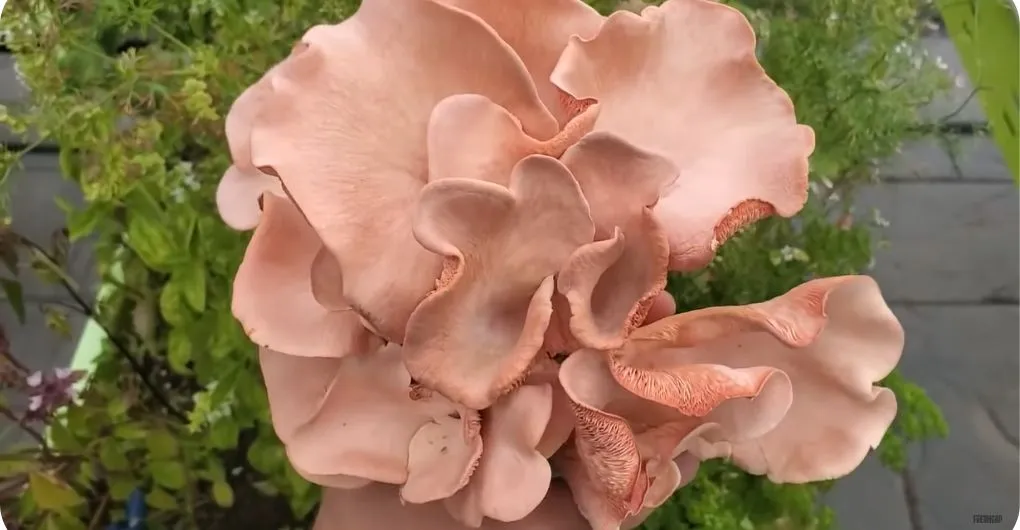
Beech mushrooms as a substitute for Enoki mushroom
In many aspects, beech mushrooms often referred to as bunapi-shimeji, are a perfect substitute for enoki mushrooms. Both types of mushrooms are adaptable elements in various cuisines due to their mild flavor and delicate texture.
There are several similarities between the growth patterns of beech and enoki mushrooms. Both types develop in clusters and favor milder temperatures. However, compared to enoki mushrooms, beech mushrooms have a more rigid texture and a shorter shelf life.
Enoki mushrooms can be substituted with beech mushrooms in many dishes. They work exceptionally well in salads, stir-fries, and soups. You can roast or sauté beech mushrooms to bring forth their nutty flavor.
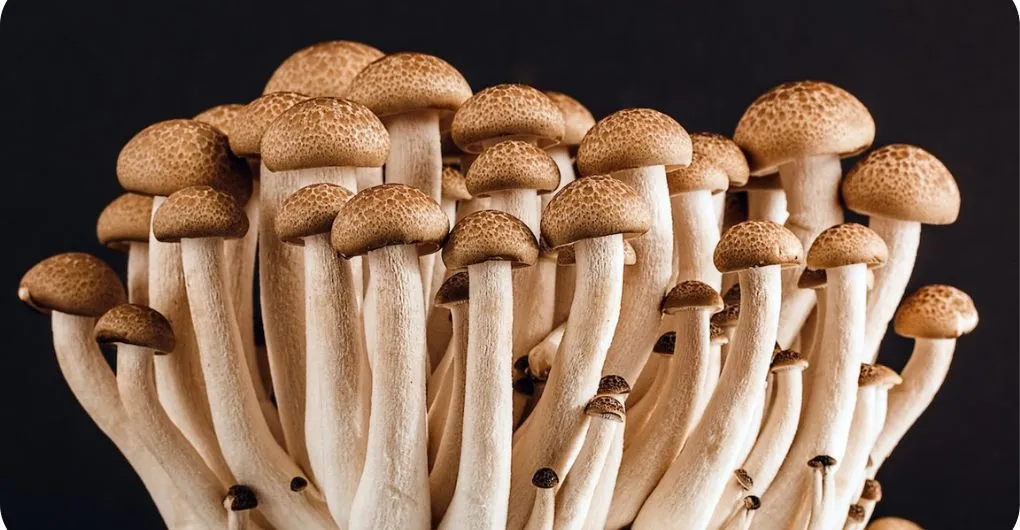
Button mushrooms as Enoki mushroom substitute
Button mushrooms are a common type of mushroom that is also known as white mushrooms. While enoki mushrooms have a unique, delicate texture and flavor, button mushrooms have a slightly firmer texture and a mild, earthy taste.
Both varieties of mushrooms can be grown relatively quickly. However, enoki mushrooms need a cooler environment with a lot of humidity. Because of their firm texture, button mushrooms may require more cooking time than enoki mushrooms.
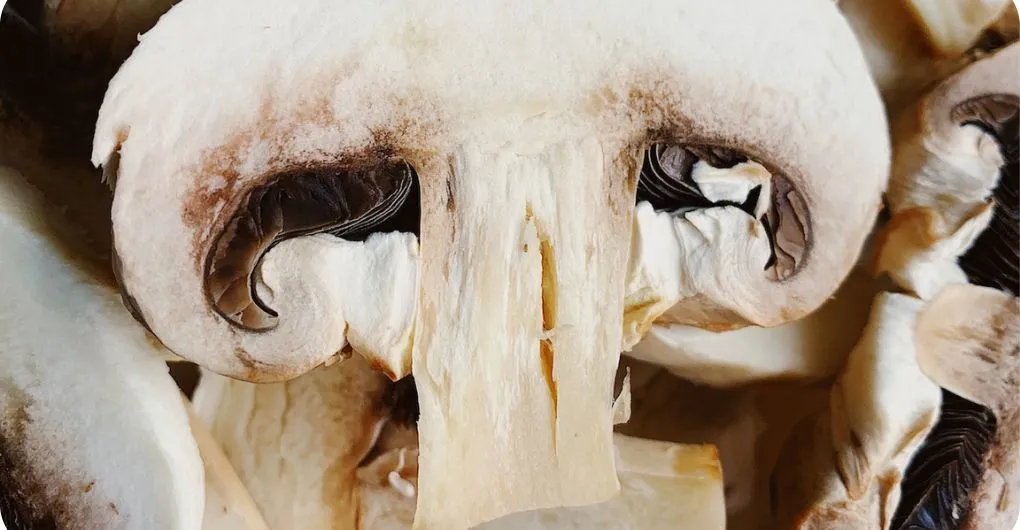
Portobello mushrooms as enoki mushroom substitute
Portobello mushrooms make an excellent substitute for enoki mushrooms due to their similar characteristics and versatility in cooking. While Portobello mushrooms are big and meaty and have a solid texture that holds up well in meals that need longer cooking, enoki mushrooms are delicate and petite.
They also taste deep and earthy, which complements a range of dishes. Both mushrooms have adaptive development patterns and can be cultivated in a range of settings. Portobello mushrooms can be grilled, roasted, sautéed, added to soups and stews, and used in vegetarian meals instead of meat.
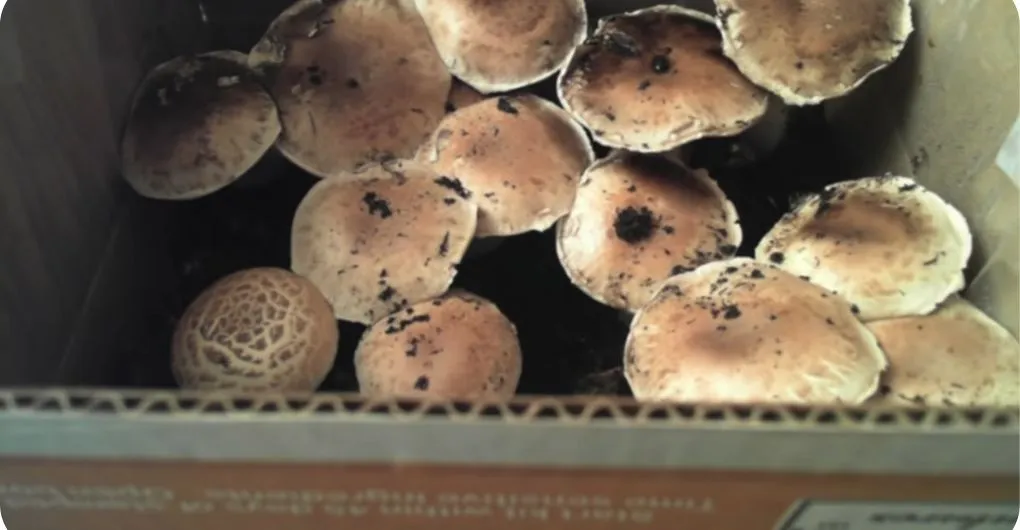
Shimeji mushrooms as enoki mushroom substitute
Shimeji and Enoki belong to the same family and share a similar texture, with Shimeji mushrooms having a slightly firmer texture. They both have little calories, no fat, and are a rich source of minerals and vitamins.
Shimejis have a flavor similar to the mild, somewhat sweet flavor of enoki mushrooms and are nutty and earthy.
Regarding growth habits, Shimeji mushrooms grow in clusters, while enoki mushrooms grow in long, thin strands.
Shimeji mushrooms are more straightforward to grow than enoki mushrooms, which need cooler temperatures and lower humidity. Shimeji mushrooms like warmer temperatures and high humidity.
Both have similar range of uses in cooking. Like enoki mushrooms, Shimeji mushrooms are best added at the end stage of cooking process to avoid overcooking and maintain their delicate texture.

Maitake mushrooms as a substitute for enoki mushroom
Enoki mushrooms can be substituted with maitake mushrooms, popularly referred to as “Hen of the Woods,” which are equally tasty and nourishing. Maitake mushrooms are a fantastic replacement in a range of cuisines because of their earthy flavor and substantial texture.
These frilly-looking mushrooms, which assemble in groups near tree bases, offer an aesthetic flair to any dish. Similar to enoki mushrooms, maitake mushrooms are a flexible element in cooking because they can be baked, grilled, or fried.
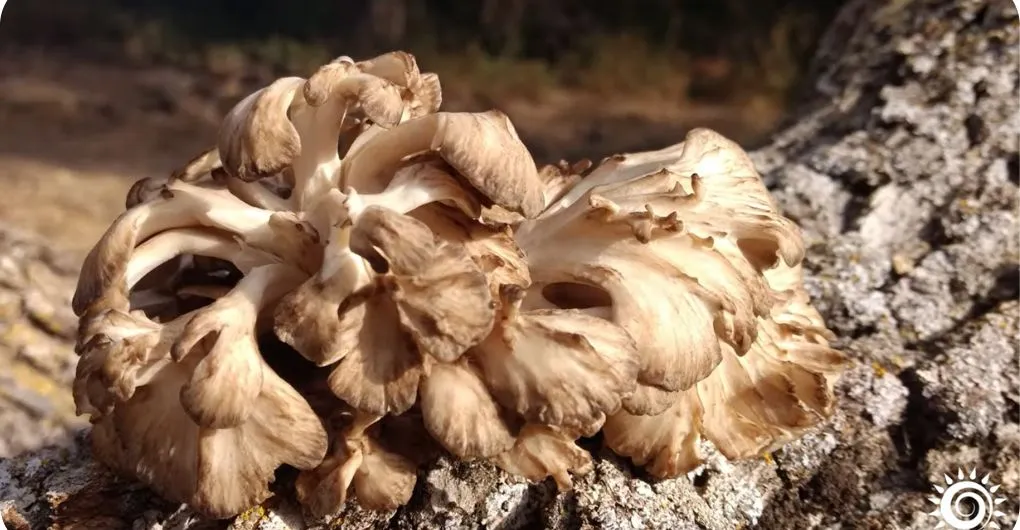
Cremini mushrooms as a substitute for enoki mushroom
Cremini mushrooms share a similar growth habit with enoki mushrooms, with both thriving in cool and damp environments. Identical to the nutty flavor of enokis, creminis have a rich, earthy taste as well.
Cremini is adaptable in the kitchen and may be used in various dishes, including broth, curries, stir-fries, and seasonings. By choosing cremini as a substitute for Enoki, you’ll be able to enjoy a similar flavor and texture without having to search high and low for the elusive enokis.
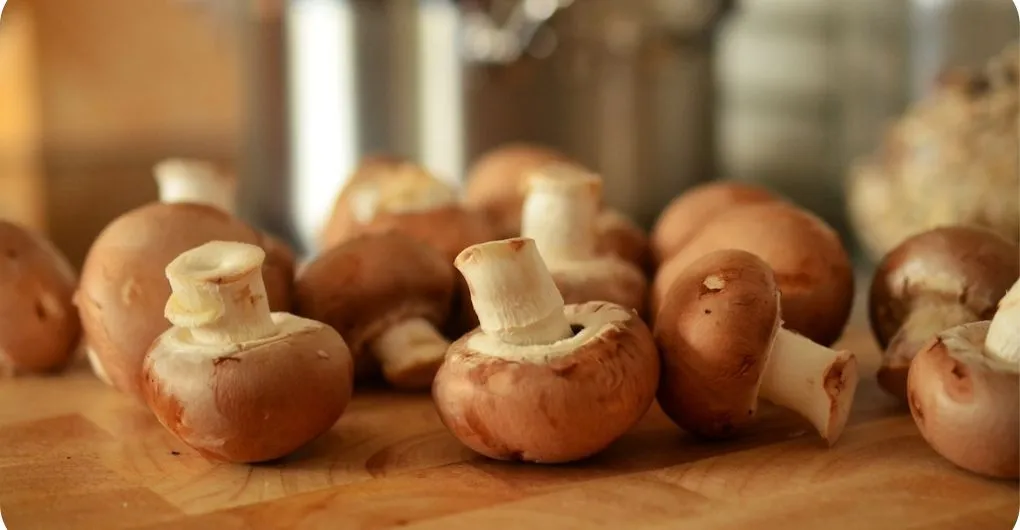
Chanterelle mushrooms as a substitute for enoki mushroom
Chanterelles can readily be substituted for Enoki in many recipes because they have a comparable flavor and look. These fungi are renowned for their growth patterns, as they can flourish in a variety of soils and situations.
Chanterelles are a must-try for any mushroom fan, whether sautéing them with butter and herbs or using them as a topping for your favorite recipe.
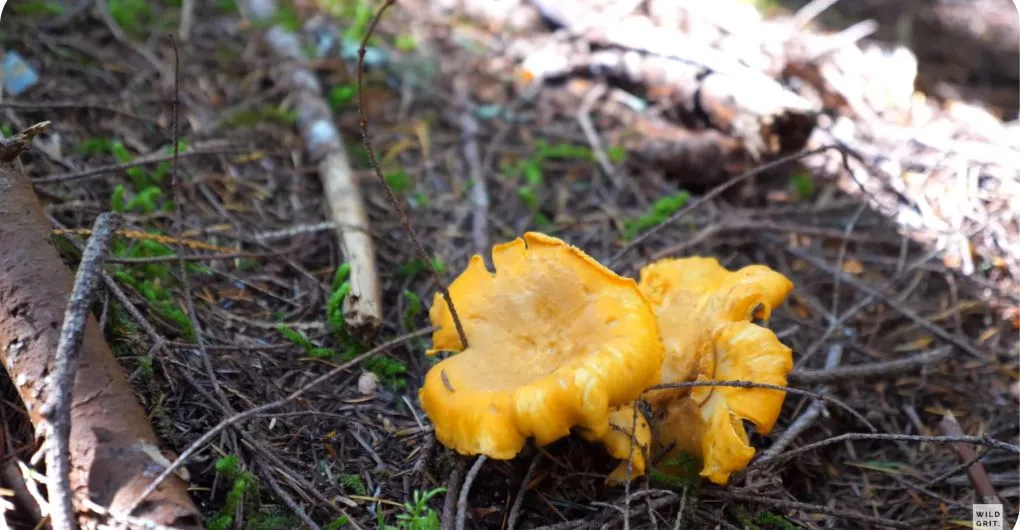
Morel mushrooms as a substitute for enoki mushroom
Morel mushrooms have a distinctive, conical shape and a honeycomb-like cap, unlike enoki mushrooms, which grow in dense clusters with long, thin stems. They grow in wooded areas and are a prized find for foragers.
Both morel and enoki mushrooms are ideal for soups, stir-fries, and pasta dishes due to their delicate texture and an earthy flavor in many words. Morels work incredibly well in savory sauces when their nutty, deep flavor can stand out.

Vegetable Substitutes For Enoki Mushrooms
However, practically all of the vegetables can be used in place of enoki mushrooms. But here is a list of vegetables that can be substituted for enoki mushrooms. Which are:
- Bean sprouts
- Asparagus
- Bok choy
- Napa cabbage
- Bamboo shoots
Enoki mushroom Noodle substitute
Shirataki noodles, which are manufactured from konjac root and are inherently low in calories and carbohydrates, are a fantastic choice. These noodles can be used in stir-fries, soups, and other cuisines and have a texture that is comparable to that of typical enoki mushroom noodles.
- Zucchini noodles as enoki mushroom noodle substitute
Zucchini noodles, commonly called “zoodles,” are an additional choice and are created by spiralizing fresh zucchini into strands that resemble noodles. Zoodles are a delicious way to increase your intake of vegetables because they are low in calories and carbs.
- Sweet potato noodle as enoki mushroom noodle substitute
You can also use sweet potato noodles, which are created by spiralizing sweet potatoes into long, thin noodles, as a heartier substitute. A range of sauces and toppings go well with the mildly sweet and earthy flavor of sweet potato noodles.
- Rice noodles as enoki mushroom noodle substitute
Finally, rice noodles, which are created from rice flour and water, are a choice if you’re searching for gluten-free food. These delicately textured noodles are frequently used in many Asian recipes.
Enoki mushroom substrate
Enoki mushroom substrate refers to the material that provides the nutrients and conditions necessary for the mushrooms to grow. To cultivate these mushrooms, a suitable substrate is essential for the spores to grow and thrive.
A blend of hardwood sawdust and wheat bran is one of the most widely used substrates for cultivating enoki mushrooms. This mixture also supplies the essential nutrients in addition to providing the right texture and moisture level for the mushrooms to grow.
The substrate is routinely pasteurized to eliminate any dangerous bacteria or fungi that can compete with enoki mushrooms for nutrition.
These mushrooms are frequently grown in plastic bottles or bags with tiny holes for air circulation. The substrate is put into the bags, then the spores are added. For the mushrooms to grow, the bags are then sealed and kept in a cold, dark location.
Depending on the growing circumstances, they usually develop in 3–4 weeks.
They can be produced all year long if the right circumstances are kept in place, which is one of their benefits. You may readily find enoki mushroom substrate from specialty mushroom suppliers. Alternatively, you can make it yourself at home by mixing sawdust and wheat bran.
Are Enoki mushrooms expensive?
The price of Enoki mushrooms can vary depending on the region where they are sold, the season, and the supplier. However, they are generally not thought to be more expensive than other kinds of specialty mushrooms.
In some places, enoki mushrooms could cost a little bit more than more widely available varieties like button or portobello mushrooms, but they are typically still pretty reasonable. Enoki mushroom costs may also vary depending on their freshness, whether they were cultivated using organic or conventional methods, and if they were imported or grown locally.
Enoki mushroom substitute: Final thoughts
Thus, finding a suitable enoki mushroom substitute is simple now. With the variety of options available, such as shiitake or oyster mushrooms, it’s easy to adapt recipes, or you can enjoy growing them in your garden. So, if you do not have enokis at your hand, feel free to experiment and try out different substitutes. If you have any additional queries, ask me in the comments. Thank you!
Each mushroom has its unique growth habits and characteristics. Read my other articles to learn more:

